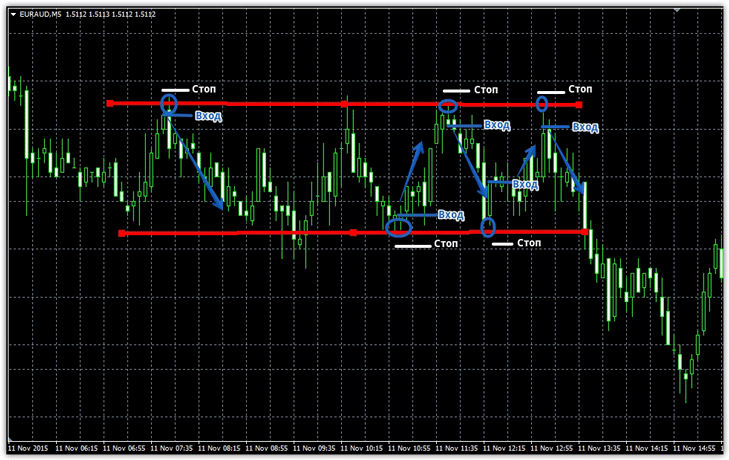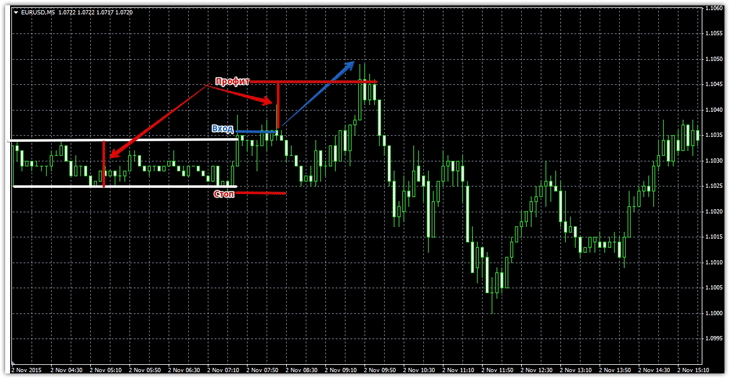Scalping during a flat
For most market participants, the onset of a flat is almost always associated with losses. It so happened that our upbringing as traders is focused on trend trading, and the emphasis is always on the fact that the trend is our friend.
It so happened that our upbringing as traders is focused on trend trading, and the emphasis is always on the fact that the trend is our friend.
In theory, following the trend is always a profitable tactic, however, in recent years in the forex market we can see mostly sideways movement with emerging micro trends that both quickly arise and quickly turn into sideways movement.
This state of the market has thrown many traders off track, since the eternal problem of knocking out stop orders due to a strong wide flat does not allow trend strategies to fully reveal their potential.
While the vast majority suffer losses, there are those who, on the contrary, make money during a flat, using scalping to rake in profits even on the slightest fluctuations in the chart.
By using scalping during a flat, you have an excellent opportunity to end the day with a profit, since while your trend trading strategy produces losses, a strategy aimed at a sideways trend will bring profit.
One of the most popular trading tactics for scalpers is channel trading .
This is not due to the desire of traders, but to the peculiarity of the flat state of the market, which resembles a saw blade, where all the peaks and troughs are approximately at the same level. In order to build a channel, it is necessary to draw two lines, namely support and resistance along two or three points at which the price constantly rests.
However, for some reason many people are mistaken that the flat market moves clearly horizontally. In fact, this is not so, since a flat is a kind of accumulation of the forces of the participants and whose forces prevail in that direction, the price chart may be tilted. However, let's first look at a typical sideways trend on a five-minute chart:

The picture shows a wide flat, in which there is every opportunity to make money by scalping. As you may have noticed in the example, the price forms a kind of range in which it fluctuates, and since market participants have not decided on the further course of the price, the chart may remain in this state for a long time.
Therefore, very simple signals arise, namely, we buy when the price touches the lower border of the channel and sell when the price pushes off the upper border of the channel. The target at which we exit the position is the opposite border of the channel, and the stop order must be placed several points from the edge of the channel.
More precisely, the exit point is the appearance of a signal in the opposite direction. More details using the example below:
 However, a flat does not always have such a wide range of price fluctuations as shown above. Very often there are areas of so-called consolidation of forces, where the price fluctuates between 5-10 points. The tactics of working with such a flat remain the same, but in this case we do not scalp, but engage in pips, pulling out a couple of points from the market.
However, a flat does not always have such a wide range of price fluctuations as shown above. Very often there are areas of so-called consolidation of forces, where the price fluctuates between 5-10 points. The tactics of working with such a flat remain the same, but in this case we do not scalp, but engage in pips, pulling out a couple of points from the market.
Personally, from my experience, I will say that when such a narrow flat occurs, it is best to sit out and enter a position to break through one of the boundaries. So, if you see a very narrow channel, then we buy when the upper line of the channel is broken and sell when the lower line is broken. The stop order must be placed on the opposite side of the channel, and our goal is the size of the constructed channel.
For example, if the range in which the chart fluctuates is 10 points, then the minimum profit should be set to 10 points. When this goal is achieved, the price most often continues to move, so it is necessary to partially close the position or transfer the stop order to a no-loss order. For more details, see the example below:
 When using scalping in a flat, you need to pay a lot of attention to the width of the channel. As historical observations show, the wider the range, the better this kind of strategy works. A strong narrowing of the channel indicates a potential explosion, so if you see a gradual narrowing, be prepared for a strong breakout and exit beyond the channel.
When using scalping in a flat, you need to pay a lot of attention to the width of the channel. As historical observations show, the wider the range, the better this kind of strategy works. A strong narrowing of the channel indicates a potential explosion, so if you see a gradual narrowing, be prepared for a strong breakout and exit beyond the channel.
Remember, to pip in a very narrow channel you must open an account with a broker with a minimum spread .
